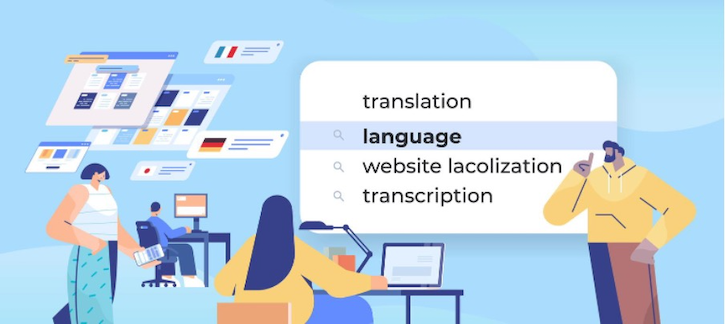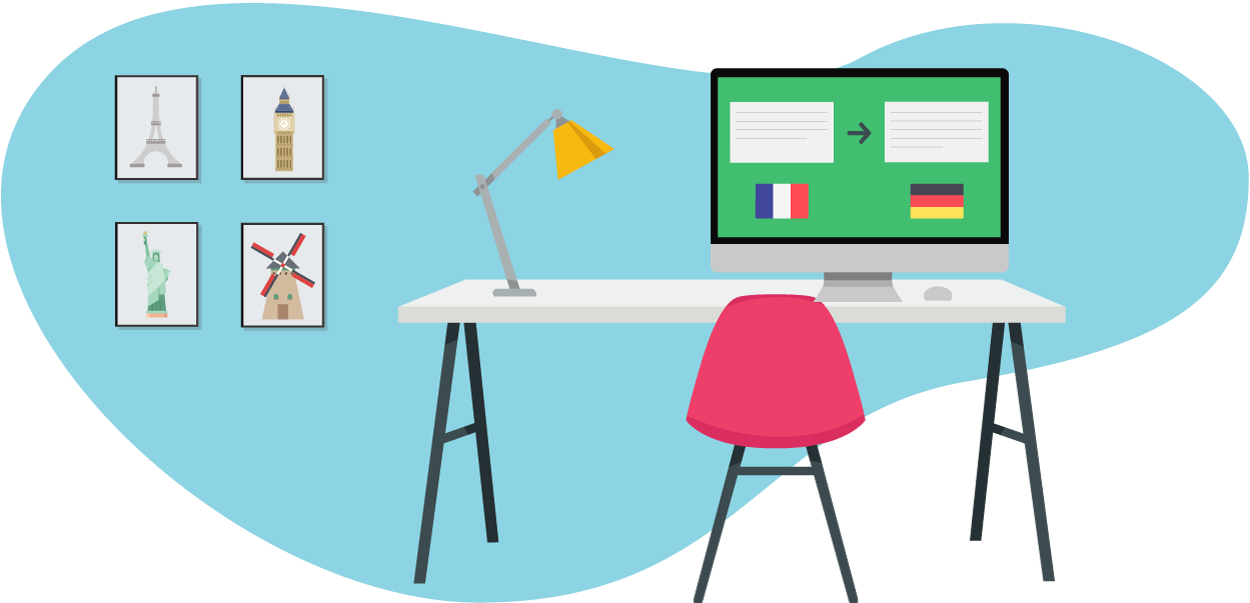As a website operator, you’ll find web translation opens a variety of doors. And you’re right to research its unique features: it can be used to boost your international e–commerce activity and increase your organic traffic. This means translating your website is a useful acquisition strategy for improving your sales and visibility. But what do you need to know before you start?
How is web translation different from classic translation?
As is the case with books and print journalism, all the texts on your website can be translated into foreign languages. This could be a landing page, or an ebook, or alt tags for images. All the content you translate will help your website rank higher in search engine results pages.
In fact, this is the main difference between classic translation and web translation.
With web translation, you can have your site appear in results from search engines in all the countries where you want to develop a presence. This is known as multilingual SEO.
So, without further ado, discover the unique features of web translation and how to use it to your advantage!
5 unique features of web translation
1. Multilingual SEO
First, you should know that word–for–word translation won’t get you very far with multilingual SEO. Why? It’s simple: different countries type different keywords into Google.
If you want the best possible multilingual SEO, you need to find the right keywords for each country. Then you need to use them at the right points in your texts.
A main keyword should appear in:
- The page title
- The H1 and other Hs
- The alt tags of some images (where relevant)
- The body of the text
- The metadescription
- The slug
The idea is to feed the search engines and help them rank your website among the top results for the search. This means it’s important to have your main keyword translated in all these strategic locations.
2. Hreflang tags
You may want to turn to hreflang tags to optimise your multilingual website. This is a technique used by sites that publish similar content in different languages.
Thanks to these bits of code, search engines can understand a page’s international context. And for good reason: they tell Google, Bing and Yahoo which country the page is designed for. The robots can therefore choose the right page to display for each user, depending where the latter is located. This reduces the bounce rate and considerably improves the user experience (UX).
Furthermore, it stops search engines seeing different versions of your page as plagiarised content.
3. Website design and appearance
When you translate a website into a foreign language, you sometimes need to change elements of the design. Let’s look at an example. When you translate from German to Chinese, you’ll find the translation is much shorter than the original text. This means it will look completely different on your homepage and the photo/text ratio could be wrong.
You may have to change your website appearance for some languages. This also applies to other communication channels like social media posts, white papers, email campaigns, etc.
4. Understanding the company and its needs
Just as literary translators need to know about the lives of the authors they translate, web translators must find out about the companies they translate for. This means working to the editorial style guide, using the tone required and tailoring the translation to the target audience.
Web translators also have to choose their words carefully to come up with a faithful translation of the source text. For example, they need to be mindful when converting prices from one currency to another (such as dirhams to euros).
In addition, web translators have to be scrupulous about converting date and time formats, units of measurement, bank holidays and local customs. All this helps the reader feel they are being spoken to by the text.
5. Unique technical features of web translation
Finally, the unique features of web translation also include technical elements. If you decide to translate your website content into a new language, you will need to think about your domain name.
Imagine you’re a company called “Ecommerce A”. You can either have:
- Several domains (e.g., ecommercea.co.uk, ecommercea.fr) – which is quite expensive
- A domain + sub–domains (e.g., ecommercea.com)
- A domain + a section per language (e.g., ecommercea.com/fr)
- A URL for each language (e.g., ecommercea.com?lang=fr) – which is bad for your website’s SEO
If you’re looking for the most affordable and easiest way to get good SEO results, choose option 3. This solution is simple to introduce and the main link’s popularity will affect the other links.
The unique features of web translation: final words
We hope this guide to the unique features of web translation has been useful! Our aim was to share some elements to think about when designing a multilingual translation strategy.
Of course, we suggest you use a professional translation service to translate your website. Otherwise, you might find the translation contains cultural inconsistencies, grammatical errors or misinterpretations.
At TextMaster, we’re very proud of our web translators’ attention to detail. Conscientious and brimming with cultural awareness, TextMaster professionals provide exceptional translations. You’re welcome to use our services to translate your webpages, ebooks, infographics, newsletters, CTAs and any other communication materials.







